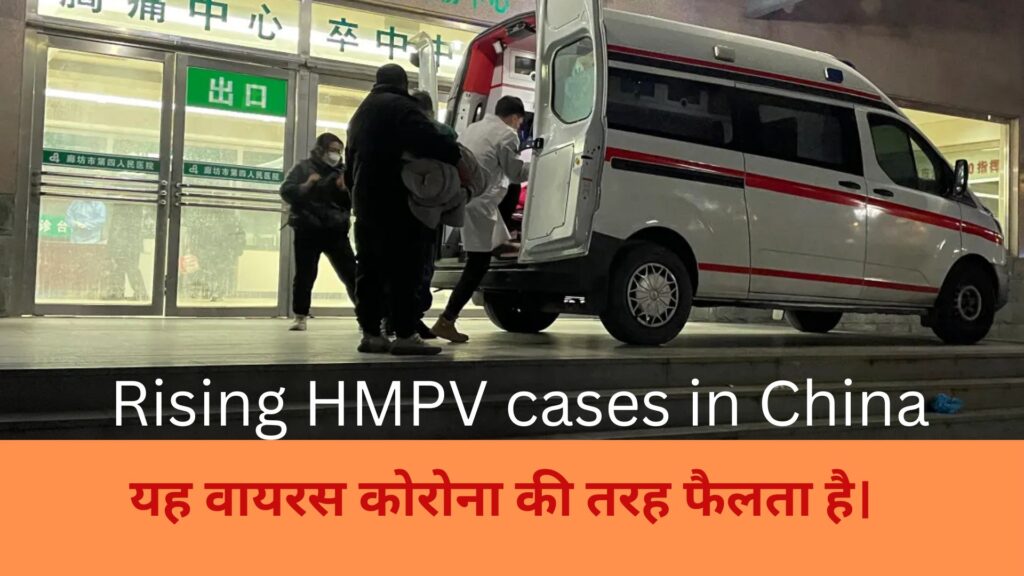The Union Health Ministry of India has confirmed that it is keeping a watchful eye on the Human Metapneumovirus (HMPV) outbreak in China. While respiratory illnesses in China, particularly HMPV, have shown an uptick, Indian health officials have noted that no unusual spike in respiratory diseases has been recorded domestically.
HMPV, a virus capable of causing upper and lower respiratory illnesses, poses a higher risk to young children, older adults, and individuals with weakened immune systems. Symptoms such as fever, cough, nasal congestion, and shortness of breath may escalate into complications like bronchitis or pneumonia.
Dr. Atul Goel, Director-General of Health Services, reassured the public on Friday that no HMPV cases have been detected in India so far. He emphasized that respiratory illnesses during winter are not uncommon and that Indian hospitals are well-equipped to manage such cases.
“We are closely monitoring the developments in China. However, at this stage, there is no reason for concern. HMPV is a respiratory virus with flu-like symptoms, primarily affecting vulnerable groups such as children and the elderly,” said Dr. Goel. He also noted that while no specific antiviral medication exists for HMPV, routine supportive care is usually sufficient for recovery.
The Ministry’s National Centre for Disease Control (NCDC) is actively tracking respiratory and seasonal influenza patterns in collaboration with international health agencies.
Five years after the COVID-19 pandemic, China is grappling with a surge in HMPV cases, particularly among children under the age of 14. The rise is more pronounced in northern provinces, with symptoms resembling those of other respiratory infections.
According to reports, the outbreak in China is being closely studied, but Indian officials stress that the conditions there differ significantly from those in India.
Discovered in 2001, HMPV belongs to the Pneumoviridae family, which also includes the respiratory syncytial virus (RSV). Increased use of molecular diagnostics has highlighted HMPV as a key contributor to upper and lower respiratory infections.
The virus spreads primarily through respiratory secretions, close contact, and touching contaminated surfaces. Its incubation period ranges from three to six days, with symptoms typically lasting a week or more, depending on severity.
Although HMPV is not new, awareness of its impact is growing as diagnostic methods improve. In the United States, the virus follows seasonal patterns, with circulation beginning in winter and extending through spring.
Indian health experts urge the public not to panic but remain cautious. Dr. Goel pointed out that respiratory viruses, including HMPV, are common during the colder months. “Our healthcare infrastructure is robust and capable of managing seasonal illnesses. At this point, there is no evidence suggesting an unusual trend in respiratory diseases within the country,” he added.
The Ministry has also noted that the Indian Council of Medical Research (ICMR) has not observed significant deviations in hospital admissions or testing data related to respiratory illnesses.
Protecting Yourself
While no HMPV cases have been reported in India, basic precautions are recommended to minimize the risk of respiratory infections:
- Practice Good Hygiene: Regular handwashing and using sanitizers can reduce the risk of infection.
- Avoid Close Contact: Maintain distance from individuals showing symptoms of respiratory illness.
- Wear Masks in Crowded Areas: Masks can provide added protection, especially during the flu season.
- Stay Updated: Follow reliable health advisories and updates from government agencies.
Lessons from the Pandemic
The surge in HMPV cases in China serves as a reminder of the importance of proactive health measures and monitoring systems. Although HMPV is not as severe as COVID-19, its potential to cause complications underscores the need for vigilance.
The Union Health Ministry reassures citizens that it remains committed to safeguarding public health. Regular updates will be provided as the situation evolves. Meanwhile, India continues to prioritize monitoring, preparedness, and awareness to mitigate risks associated with respiratory illnesses.




